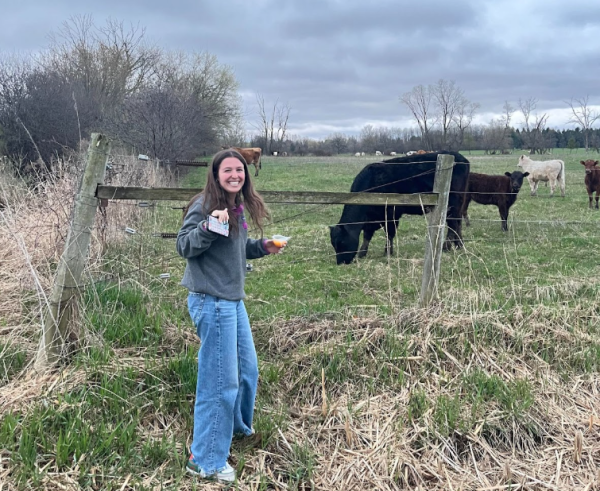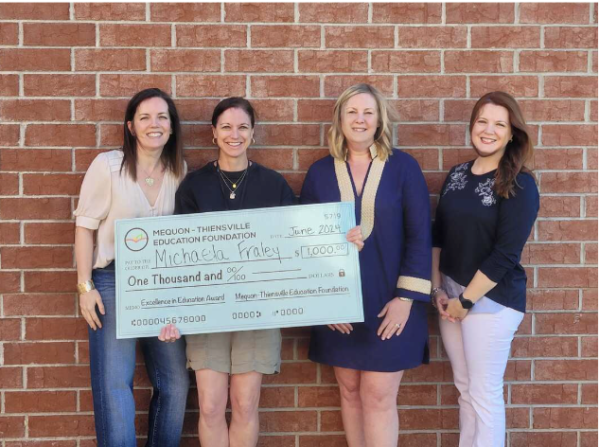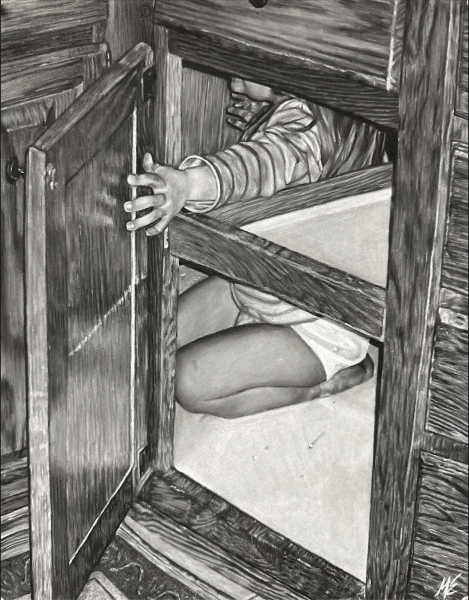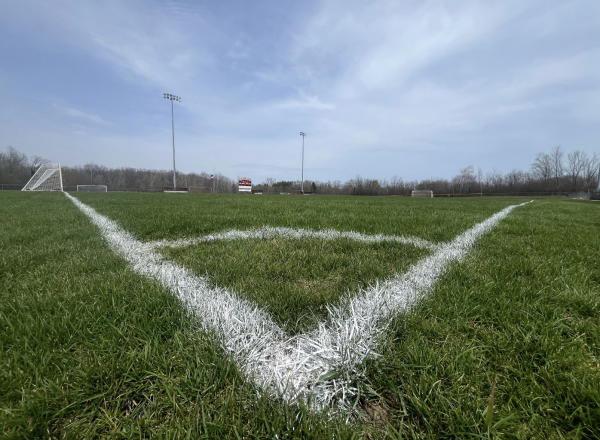During times of injury, my passion for gymnastics did not falter
Taylor Raskin, senior, completes a skill on the uneven bars, her favorite event.
Some of my earliest memories were made in the gym. I remember jumping into the foam pit and trying to cross the impossibly big, blue floor on my hands. The pure joy of my gymnastics birthday parties and showing my friends my cool tricks at open gym are unforgettable parts of my childhood. Nothing made me happier than gymnastics.
I joined the Junior Olympic gymnastics program and started competing when I was 7 years old. I wasn’t the best gymnast on my team of 25 girls, and I certainly wasn’t favored by the coaches like some others. However, my passion for the sport and drive to improve was very apparent from a young age. From the beginning, I knew that I wanted to compete at top level and be the best some day while members of my team openly admitted that they just wanted to have fun.
Throughout the years, gymnastics pushed me to my limits both physically and mentally. The huge blisters on my hands bled every time I practiced on the uneven bars and made it difficult to hold my pencil in school. My severe shin splints and hairline fractures in my ankles were just normal pains that had to be ignored during competition season. My mental block on vault was so extreme at one point that I couldn’t even stand at the end of the runway and look down at the apparatus 70 feet away. However, my greatest challenges still laid ahead.
My first major injury occurred when I was 13 years old. During my training, I attempted to do a pirouette skill on the uneven bars, and I missed the regrasp of the bar. Although I was on a bar over the foam pit, the mistake caused me to fall sideways, and I landed on my back on the concrete beside the pit. The 10-foot drop from the bar cracked my sacrum, a vertebra in the lower spine.
Months away from a sport like gymnastics are detrimental, and sometimes career-ending. Gymnasts rely heavily on “muscle memory,” which is created by countless repetitions of an action. After completing a skill over and over again, the body simply knows how to execute it with very little thought. The muscle memory disappears after not completing the action for just a few weeks, and gymnasts are forced to rebuild their skills from the ground up. Something as simple as a cartwheel feels foreign again. Returning to gymnastics takes months and sometimes years. My comeback from my fractured back was difficult, but little did I know that my setbacks were far from over.
Once released by my doctor, I trained for 7 days each weeks to get back to where I was before my injury and finish my season strong. It was the night before we were leaving for Nashville, Tenn. for my first competition since my broken back. On the last event of my 4 hour practice, I used my arms to break a fall. Searing pain shot up my right arm, and in that instant, I knew that my season was over. No words can describe the pain I felt inside of me knowing that my dreams were crashing down for the second time in just 3 months.
My fall resulted in two broken bones and a fully torn ligament in my elbow. I was told that I would probably never fully straighten my arm again and my return to the sport would be very difficult. Despite the warnings from my doctor, I spent 9 months relearning every skill once again.
Exactly 1 year after the fall that broke my sacrum, disaster stuck again. I missed my hands on a vault and landed hard on my knees. When my knees hit the ground, my femur pushed my kneecap out of place and destroyed the cartilage underneath my kneecap. I had my first major surgery to repair the damage caused by the landing.
It seemed that my comeback to gymnastics was finally going smoothly when I dislocated my kneecap for the first time. As a result of the surgery, my medial patellofemoral ligament was stretched out and could not properly hold my kneecap in place. Throughout that year, I dislocated my kneecap 9 times. Each time was incredibly painful in addition to further stretching out my MPFL and ruining the cartilage repair performed in the surgery.
At this point, I was a sophomore in high school. My aspirations of college gymnastics seemed to be over, for I had missed the prime, middle school years of recruitment. My body could no longer handle the chronic pain nor the severe injuries, and I was limited to just the uneven bars as a result of the complications with my knee. The close friends I had made already quit, leaving me to be the last of the 25 girls I started with remaining in the sport. I was missing out on social events due to the immense practice commitment. My coaches were verbally and emotionally abusive, and I came home from my 4 hours of practice each night on the verge of tears. I was afraid of disappointing my parents who had supported me through everything, but most of all, I didn’t want to disappoint the little girl inside of me who fell in love with the sport 14 years ago.
After weeks of contemplation and fear of regret, I decided that it was best to end my time as a club gymnast. I joined the Homestead gymnastics team because I wasn’t ready to let go of the sport just yet. To my surprise, I rediscovered my overwhelming passion for gymnastics during my first season of high school gymnastics. High school gymnastics relit the fire inside of me and awoke my insatiable drive to improve and to win.
I finally had my long-overdue, second major knee surgery to completely reconstruct my ligament and repair cartilage damage following my sophomore season. The comeback after my second surgery was the most difficult thing I have ever done. Due to my unstable knee, I had not trained on 3 of the 4 events for nearly 3 years. Any muscle memory that I once had was long gone, and it was as if I was a little girl learning gymnastics for the first time again.
Thanks to a successful surgery, I was able to compete all of the events during my junior and senior seasons. I had not competed in the all-around since I was in sixth grade, and my years of hard work were finally reflected when I received 3 medals at the 2020 WIAA state meet.
When I chose to quit club gymnastics and become a high school gymnast, I believed that I was letting go of my dreams of college athletics. Aside from my age and injuries that would make recruitment near impossible, college programs only scout club gymnasts. However, I was determined to follow through with my lifelong goals. Following a successful senior season, I was offered a spot on a division I gymnastics team.
In the fall of 2020, I will attend the University of Arizona to study retailing and consumer sciences, and I will compete on their gymnastics team. I am looking forward to joining a team at a school with high energy surrounding its sports. The intensity and excitement of collegiate gymnastics will be very different from my prior experiences in the sport. The opportunity to compete for my dream school makes every obstacle worth the pain, doubts and uncertainty. Gymnastics has taught me unmatched perseverance, adaptability, and dedication that I will take with me to college and beyond.
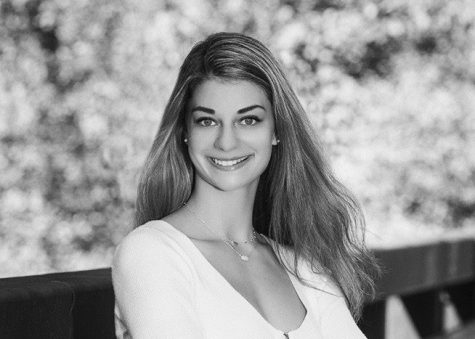
Taylor Raskin is a senior at Homestead High School who is thrilled to have the opportunity to develop her journalism skills. She is a part of the Homestead...


